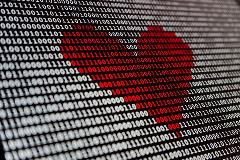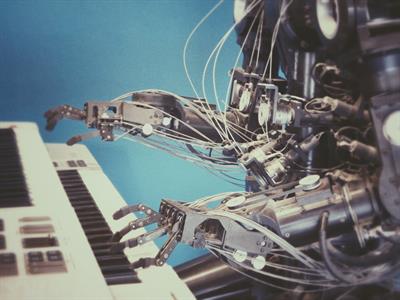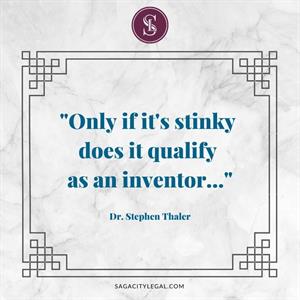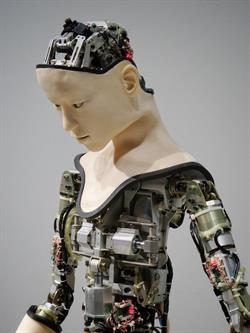
INNOVATE Magazine
INNOVATE is the online magazine by and for AIPLA members from IP law students all the way through retired practitioners. Designed as an online publication, INNOVATE features magazine-like articles on a wide variety of topics in IP law.
The views and opinions expressed in these articles are those of the authors and do not necessarily reflect the views or positions of AIPLA.
Articles
In This Section

Intellectual Property Rights of Artificial Intelligence Inventors
Randi L. Karpinia, esq.
On April 27, 2020 the United States Patent and Trademark Office (“USPTO”) published a decision declining to extend patent inventorship to an Artificial Intelligence (“AI”) named DABUS. The decision found that the application did not name an “inventor.”
Who is DABUS? DABUS stands for “Device for the Autonomous Bootstrapping of Unified Sentience”.
The USPTO is not alone. Both the EPO and UKIPO also refused the DABUS applications. Each concluded that AI does not qualify as an inventor.

Artificial Intelligence is Here to Stay
You may think of artificial intelligence as the stuff of science fiction movies. Last night, I watched the 1990s movie “The Matrix.” In that movie AI (an evil cyber-intelligence) took control of human existence. The humans, perfectly happy in their virtual reality, formed the AI power source. The movie left me uncomfortable about the future.
In actuality, AI forms a part of our everyday lives. Spell checkers, spam filters, and anti-virus software all use artificial intelligence. Social media personalized feeds, friend suggestions, and news filtering use artificial intelligence. AI powers search engines. The list goes on and on.
Unlike the evil AI of The Matrix, artificial intelligence makes our lives easier.

Artificial Intelligence Inventors and Creators
According to the United States Federal Circuit, “Conception is the touchstone of inventorship, the completion of the mental part of invention. It is the formation in the mind of the inventor of a definite and permanent idea of the complete and operative invention…[Conception] is a mental act…”
In the AIPLA meeting, Dr. Thaler explained how DABUS independently conceives. As such DABUS invented the inventions.
In fact, the UKIPO conceded that DABUS was the creator of the inventions. The UKIPO still refused to recognize DABUS as the inventor because DABUS was not a human.
So what’s an applicant to do?
A patent is invalid unless it lists the first and true inventor or inventors of the claimed invention. Thus, if Dr. Thaler named himself the inventor, the patent would be invalid. The patent would be unenforceable.

U.S. Patent and Copyright Offices Define Inventor As A Natural Person
According to the USPTO's ruling, inventions can only be conceived by a “natural person.” The USPTO interprets wording of Title 35 of the US Code such as “whoever”, “himself”, and “herself” as suggesting a natural person.
The USPTO also referred to Title 37 of CFR, which references an inventor as a “person.” The USPTO stated that both CFR and Manual of Patent Examining Procedure ("MPEP") determine that the invention “conception” must come from a natural person. Specifically, the MPEP references the “mind of the inventor.” The USPTO believes that continued references to “mental” state and the “mind” imply that a natural person must conceive an invention.”
The U.S. Copyright Office also prohibits AI from being the author of creative works. Specifically, the “U.S. Copyright Office . . . determined that it will register only those works ‘created by a human being,’ while excluding ‘works produced by a machine or mere mechanical process that operates randomly or automatically without any creative input or intervention from a human author.”
Is Artificial Intelligence a tool used by a human inventor or an actual inventor?
Why Patent Inventorship Matters
The determination of inventorship under United States patent law has been described by the courts as “one of the muddiest concepts in the muddy metaphysics of the patent law” (see: Mueller Brass Co. v. Reading Indus. Inc)
The claim of patent inventorship is of fundamental importance to the strength and validity of a patent. In fact, failure to name an inventor or naming an incorrect inventor can invalidate a patent.
U.S. Patent Statute 35 USC 101 defines an inventor as one who “invents or discovers any new and useful process, machine, manufacture, or composition of matter, or any new and useful improvement thereof.” But this is of no practical help to determine who should be named as an inventor on a patent application.
Thus it becomes up to the judicial system to focus definition clarity. The framework adopted by the U.S. courts includes a requirement for the formulation in the inventor’s mind of “...a definite and permanent idea of the complete and operative invention as it is to be applied in practice” (Burroughs Welcome Co. v Barr Labs inc.) The test for inventorship, as described in Ethicon Inc. v. United States Surgical Corp., includes:
- contribution to the conception of the invention, and
- material contribution to at least one claim
Applying these concepts to the real-world, inventors include individuals who have in a direct way contributed to:
- the creative value-added
- the development of the proof of concept of the invention
- An essential element of a claim within the patent
- Recognized as bringing a creative idea to useful fruition
On the other hand, someone who did not participate in the mental part of the inventive act only the reduction to practice which is a tangible result of the mental part is NOT an inventor. Thus, participation in the reduction of the invention, without more, does not make an individual an inventor.
So how does this apply to DABUS?
In DABUS, the applicant asserted that the claimed invention in the application was developed by a creativity machine named DABUS, which was “trained with general information in the field of endeavor to independently create the invention.” The patent offices to-date disagree that such development makes DABUS an inventor.
What do you think? Inventor or not?
An Inventor’s Role in the Patent Process
Let’s leave the philosophical discussion of whether an artificial intelligence machine can meet the requirements of inventorship for a moment and turn to the practical matters of filing a patent application.
Inventor’s oath and declaration:
A patent application must include the submission of an inventor’s oath and declaration. If an inventor’s oath or declaration executed by or with respect to each inventor has not been received by the time the application is in condition for allowance, a Notice of Allowability will be sent setting a three-month non-extendable time period within which applicant must file the inventor’s oath or declaration. In other words, a patent grant requires an inventor’s oath or declaration.
The oath or declaration, signed by the inventor, includes the following statutory statements:
- The application was made or authorized to be made by the person executing the declaration,
- The individual believes himself or herself to be the original inventor or an original joint inventor of a claimed invention in the application, and
- An acknowledgment of penalties clause referring to fine or imprisonment of not more than five years, or both.
Hmmmm, how is an artificial intelligence machine going to affirm and sign such a document? Can AI comprehend these statements legally?
The USPTO does provide for a substitute declaration. Where an inventor’s signature cannot be obtained on a declaration, an applicant (i.e., assignee, obligated assignee or party who shows sufficient proprietary interest) may execute a substitute statement if the inventor is deceased or legally incapacitated, the inventor refuses to sign the declaration, or the inventor cannot be found or reached after diligent effort. None of these seem to be applicable to the case of an artificial intelligence inventor.
How then can DABUS sign an inventor’s oath and declaration? Does DABUS have the capacity to understand the meaning and impact of the various statutory acknowledgements?
Assignment of invention:
Ownership of intellectual property is transferred by means of an “assignment” agreement. An assignment is the legal transfer of ownership in and to the intellectual property from the owner (the Assignor) to a second party (the Assignee). The Assignor typically assigns all right, title, and interest in and to the intellectual property to the Assignee, and the Assignee assumes all of the Assignor’s rights, obligations, and privileges in same. If DABUS really is an inventor, in order to benefit from the value of the invention, I presume that the invention would have to be assigned from DABUS to its creator, Dr. Stephen Thaler.
Is an assignment even legally possible? When it comes to legally binding agreements, certain people are always considered to lack the legal ability (or "capacity") to contract. As a legal matter, basically they are presumed not to know what they're doing. Agreements signed by such people are considered "voidable." In most states, the standard for mental capacity is whether the party understood the meaning and effect of the words comprising the contract or transaction. Thus, if an artificial intelligence machine, such as DABUS, entered into an assignment agreement with its creator, that agreement may not hold up in court.

Grant Artificial Intelligence Legal Personhood?
In the United States, Congress holds the power to determine whether AI should be recognized through legal personhood.
The Intellectual Property Clause of the Constitution grants to Congress the enumerated power "[t]o promote the progress of science and useful arts, by securing for limited times to authors and inventors the exclusive right to their respective writings and discoveries."
Therefore, the terms used in the Intellectual Property Clause, including “inventor,” are subject to constitutional interpretation.
Is AI a legal person? Only time will tell.
“The real question is, when will we draft an artificial intelligence bill of rights? What will that consist of? And who will get to decide that?" - Gray Scott
Randi Karpinia, founder of Sagacity Legal PLLC, helps small business and entrepreneurs minimize their legal risks. With over twenty years of experience, Ms. Karpinia is a recognized expert in all aspects of business legal management with a focus on intellectual property, legal operations, and online legal protection. Ms. Karpinia’s credentials include a B.E.E, with honors, from Georgia Institute of Technology; a M.E.E. from Florida Atlantic University; and a J.D. Magna Cum Laude from Nova Southeastern University. Ms. Karpinia is admitted to practice law in Florida and before the USPTO. and is a Florida Bar Board Certified Intellectual Property Lawyer. Ms. Karpinia is actively involved with AIPLA including being the current Vice Chair of the Mentoring Committee, Past Chair of the Women in IP Law Committee, along with numerous speaking engagements for AIPLA meetings.
Innovate Volume 20 Timeline
submit articles to innovate@aipla.org
Submission Window Open
January 2, 2026
Submission Deadline
April 10, 2026
Publication Date
June 12, 2026
About
Publishing an article to INNOVATE is a great way for AIPLA members to build their brand by increasing recognition among peers and setting themselves apart as thought leaders in the IP industry.
Any current AIPLA member in good standing may submit an article for consideration in INNOVATE throughout the year. IP law students are especially encouraged to submit articles for publication.
Articles submitted to innovate@aipla.org are reviewed by an ad-hoc sub-committee of volunteers from AIPLA's Fellows Committee, and other AIPLA peers.
Don’t miss your chance to be published with AIPLA’s INNOVATE! Email your article submission to innovate@aipla.org to be considered for the next edition.
For more information please review the Guidelines for INNOVATE Article Submission and the INNOVATE Author Acknowledgement Letter for guidelines and terms of article submission and publication.
